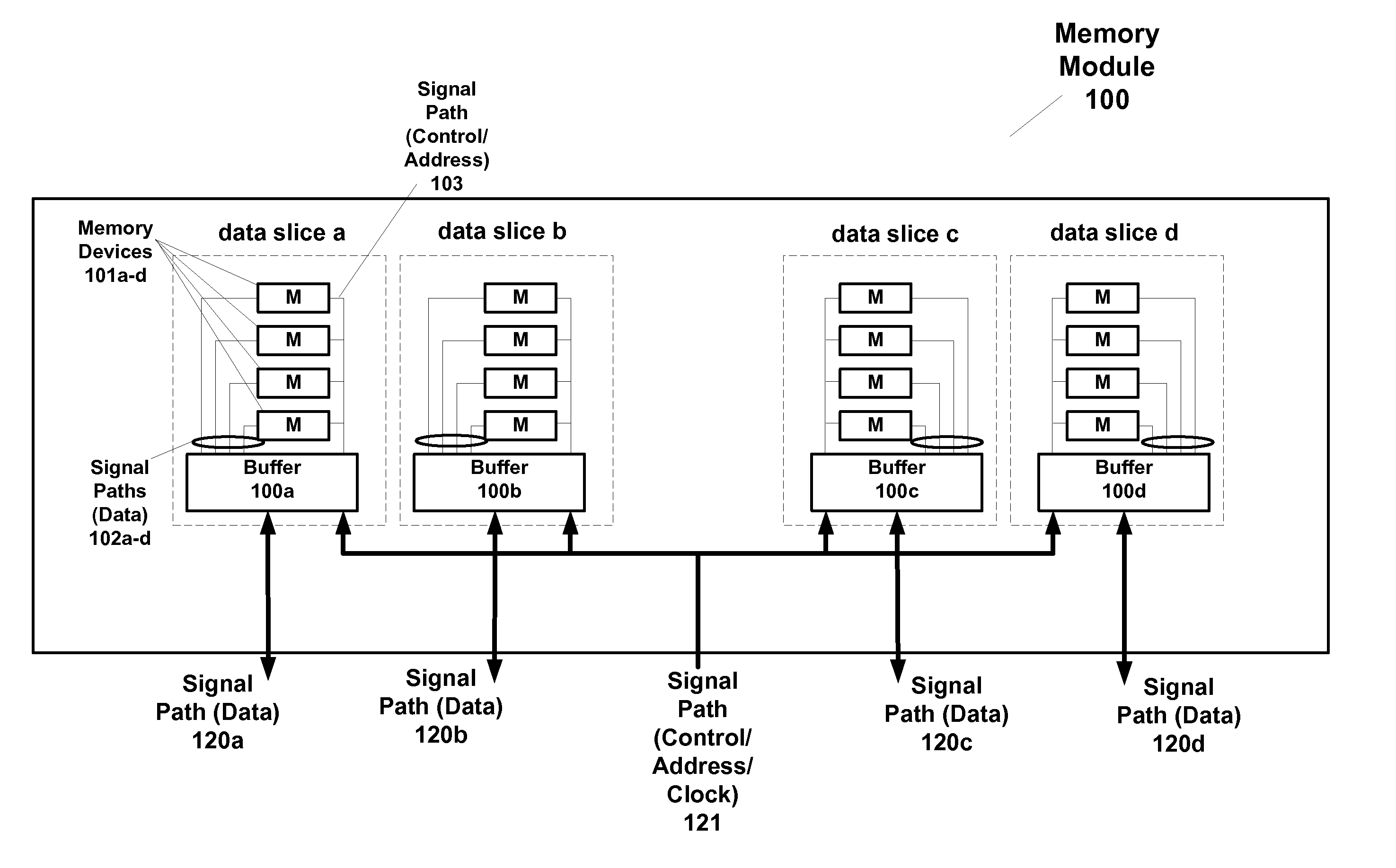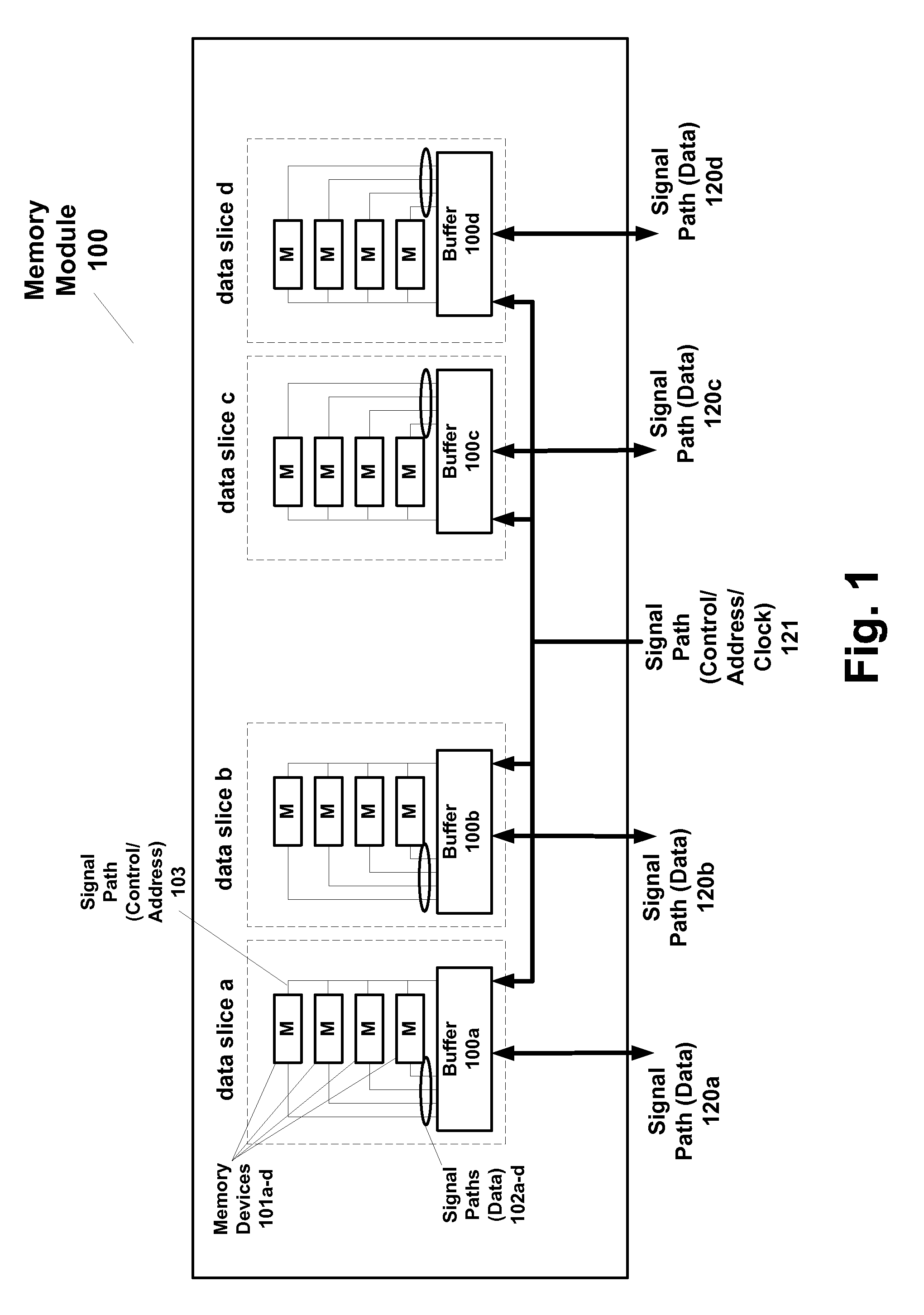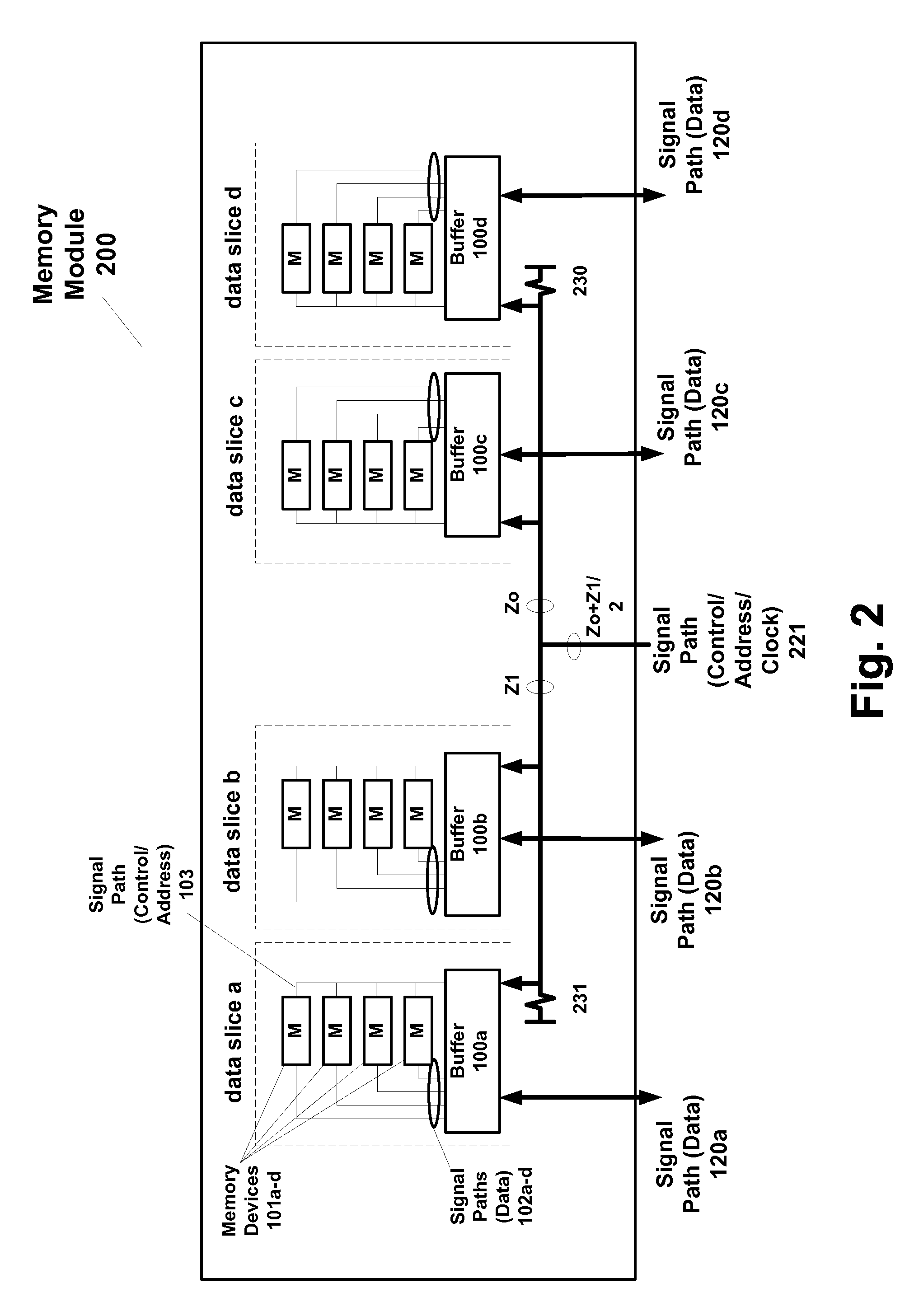System including a buffered memory module
a memory module and buffer technology, applied in the field of integrated circuit devices, can solve the problems of adversely affecting the rate at which dram technology can keep pace with the increasing data bandwidth and system capacity requirements, and is difficult to keep up with the increasing data bandwidth and system memory requirements
- Summary
- Abstract
- Description
- Claims
- Application Information
AI Technical Summary
Benefits of technology
Problems solved by technology
Method used
Image
Examples
Embodiment Construction
[0037] According to embodiments, a system includes a master device and a first memory module having a plurality of integrated circuit memory devices and a plurality of integrated circuit buffer devices that operate in first and second modes of operation (bypass mode). In a first mode of operation, a first memory module provides read data from the plurality of integrated circuit memory devices (via an integrated circuit buffer device) on a first signal path to the master and a second memory module simultaneously provides read data from its plurality of integrated circuit memory devices (via another integrated circuit buffer device on the second module) on a third signal path coupled to the master device. In a second mode of operation, the first memory module provides first read data from its plurality of integrated circuit memory devices (via the integrated circuit buffer device) on the first signal path and second read data from its plurality of integrated circuit memory devices (vi...
PUM
 Login to View More
Login to View More Abstract
Description
Claims
Application Information
 Login to View More
Login to View More - R&D
- Intellectual Property
- Life Sciences
- Materials
- Tech Scout
- Unparalleled Data Quality
- Higher Quality Content
- 60% Fewer Hallucinations
Browse by: Latest US Patents, China's latest patents, Technical Efficacy Thesaurus, Application Domain, Technology Topic, Popular Technical Reports.
© 2025 PatSnap. All rights reserved.Legal|Privacy policy|Modern Slavery Act Transparency Statement|Sitemap|About US| Contact US: help@patsnap.com



